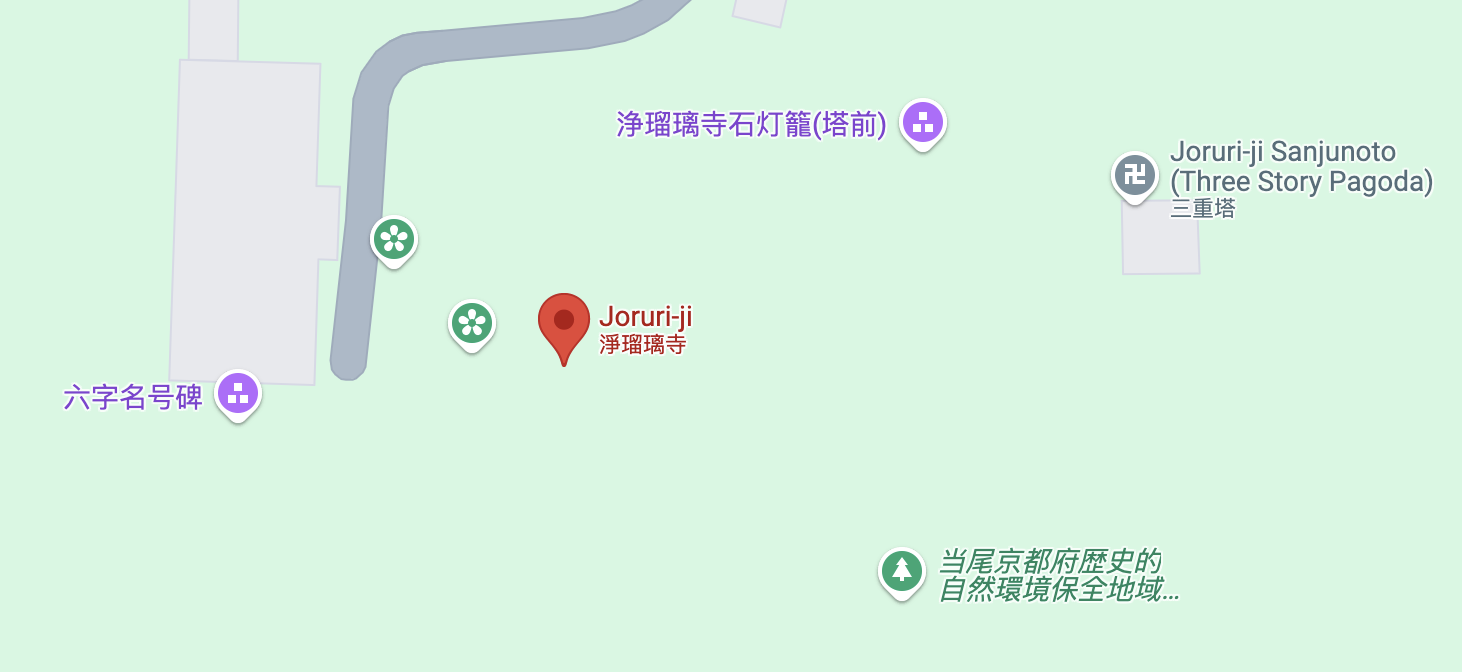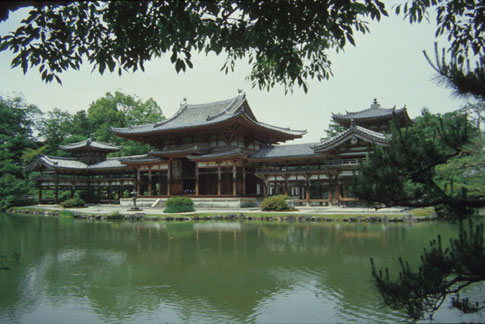
Although Joruri-ji as a religious foundation dates back to the eighth century, the main hall is an early twelfth-century structure, and was moved to its present location in 1157 (its original location is unknown). It was then that the pond garden located to the east of the hall was constructed. The main hall, famous for its nine statues of the Amida Buddha, represents the Western Paradise, or Pure Land, of Amida Buddhism. This combination of an Amida Hall and a pond garden is a rare extant example of an arrangement that was apparently commonplace in the Heian Period (the Byodo-in at Uji is the only other extant example dating in the twelfth century). Choose a view point from the map or click Tour the Garden for more views of this garden.
The garden of Joruri-ji, located in the town of Kamo near the ancient capital of Nara, is a Pure Land garden (jodoshiki) intended to evoke the Western Paradise of Amida Buddha. As a religious foundation, it dates back to the eleventh century, but the main hall is an early twelfth-century structure, and was moved to its present location in 1157 (its original location is unknown). It was at that time that the pond garden located to the east of the hall was constructed by a priest of nearby Kofuku-ji. Two decades later, a pagoda originally erected in Kyoto was moved to the steep hillside on the eastern shore of the pond. As reconstructed on the evidence of archaeological discoveries made in 1976, the pond contains an elongated island connected to the southern shore by a long stone bridge, and a prominent peninsula on the eastern shore. When it was excavated in 1976, the island and the peninsula were found to have pebbled shores, and the north end of the island contained a group of carefully placed rocks culminating in a tall standing stone that today seems to echo the pagoda on the eastern bank. Unfortunately the island and the shores of the pond have been overcome by tall grasses and weeds in the quarter century following the restoration of the site, this growth concealing much of the stone work.

